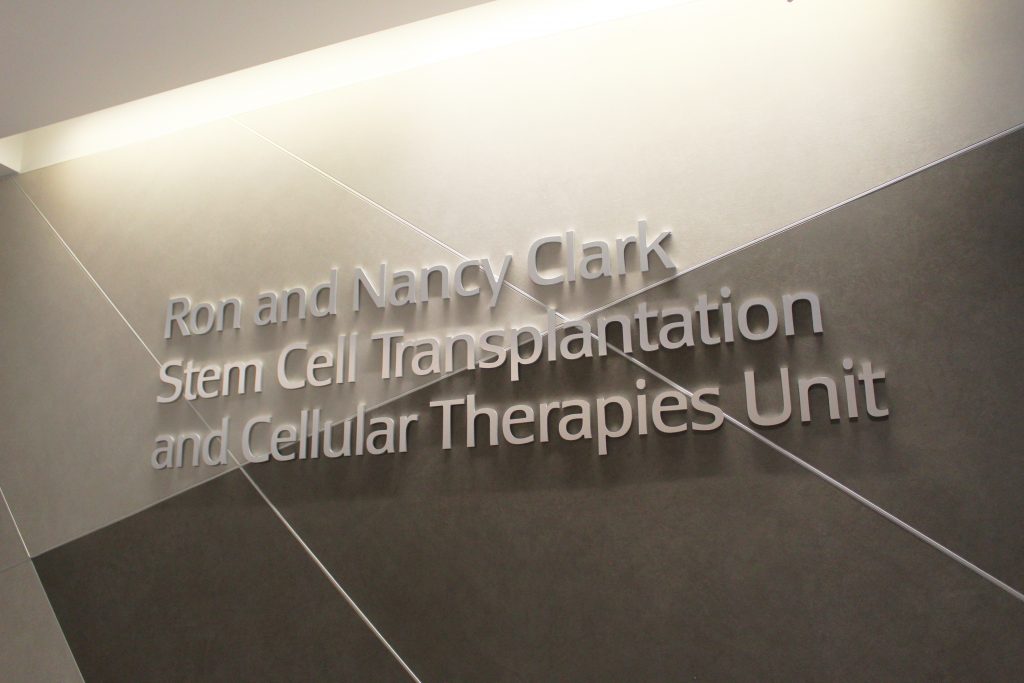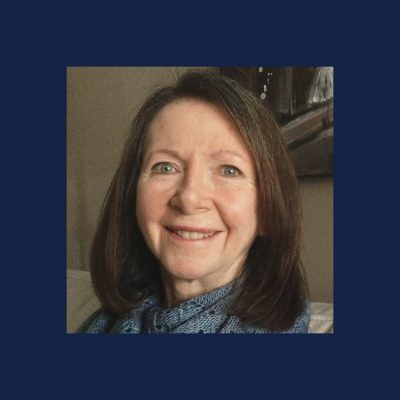
Early innovators make stem cell unit expansion possible
Hamilton’s long-time nickname is the Ambitious City, and it’s a well-earned moniker on many fronts including healthcare. In late October, after months of construction and preparation, Hamilton Health Sciences’ (HHS) Juravinski Hospital and Cancer Centre officially opened its expanded unit for patients needing treatment for blood cancers.
The new Ron and Nancy Clark Stem Cell Transplantation and Cellular Therapies Unit will begin offering patient care this week.
“In honor of this significant milestone, HHS would like to recognize key staff members — now retired — whose past contributions paved the way for HHS to become a regional and provincial leader in cancer care,” said Dr. Ralph Meyer, Vice President of Oncology and Palliative Care at Hamilton Health Sciences’ Juravinski Cancer Centre, and Regional Vice President of Cancer Care Ontario.
“Their vision for cancer care in our Ambitious City over the years is greatly appreciated by HHS and the cancer patients we care for locally, regionally and provincially.”
HHS is pleased to recognize these early leaders:
Dr. Ted Wilson
 Dr. Ted Wilson laid the groundwork for what has become the Juravinski Cancer Centre (JCC) – a regional referral centre for central-west Ontario. Today, many patients from Hamilton and beyond visit the JCC for cancer treatments such as chemotherapy and radiation.
Dr. Ted Wilson laid the groundwork for what has become the Juravinski Cancer Centre (JCC) – a regional referral centre for central-west Ontario. Today, many patients from Hamilton and beyond visit the JCC for cancer treatments such as chemotherapy and radiation.
Wilson was the first hematologist to begin practising in Hamilton in the mid-1960s. He was responsible for introducing chemotherapy to the Hamilton community and for training multiple generations of hematologists. The exceptional cancer care that HHS provides today started with Wilson’s outstanding leadership.
Dr. Michael Brain

Dr. Michael Brain arrived in Hamilton from England in 1969 and was the first division director of hematology in what was then the new McMaster University Medical School.
Brain and his colleague, Dr. Irwin Walker, were responsible for initiating the Allogeneic Stem Cell Transplantation Program in 1981. This program involves transferring stem cells from a donor to the patient after chemotherapy or radiation.
Brain worked in bone marrow transplantation from the unit’s inception until his retirement. He now resides in Calgary and is an Emeritus Professor of Medicine attached to the department of molecular biology at the Foothills Hospital.
Dr. Ann Benger
 Dr. Ann Benger began her role at the Henderson Hospital in 1982 where she was responsible for developing the Autologous Stem Cell Transplantation Program – a type of bone marrow transplant that uses the patient’s own blood stem cells to treat blood disorders and cancers.
Dr. Ann Benger began her role at the Henderson Hospital in 1982 where she was responsible for developing the Autologous Stem Cell Transplantation Program – a type of bone marrow transplant that uses the patient’s own blood stem cells to treat blood disorders and cancers.
Always passionate about treating the whole patient – physically and emotionally – Benger’s many contributions included being part of the staff committee that introduced companion pet visits to patients at the Juravinski Hospital and Cancer Centre (JHCC) five years ago.
Dr. Deb Marcellus

Dr. Deb Marcellus trained in Hamilton and worked in transplantation at Maryland’s Johns Hopkins University before returning to Hamilton in 1999, where she played an integral role in advancing our program at the JHCC, and leading in the teaching of students.
“Being involved in stem cell transplants since 1992 was a very interesting and rewarding part of my medical career,” says Marcellus.
“The evolution in the field of transplant – and malignant hematology in general over almost three decades — has been dramatic and I look forward to following further developments in the coming years.”
Jane Garner, Nurse Practitioner
 In 1997 Jane Garner became the first acute care nurse practitioner on the hematology team.
In 1997 Jane Garner became the first acute care nurse practitioner on the hematology team.
“I felt a responsibility to carve the role out in such a way that it would benefit the patients, families, multidisciplinary team and future nurse practitioners,” says Garner.
“This was not a task that I accomplished alone. I was so amazed at how readily the ward staff accepted this new role and how I was supported fully by the medical team.”
Garner worked as nurse practitioner in the malignant oncology program from 1997 to 2009. Before joining the hematology team, she worked as a registered nurse in the radiation program at the JCC.
She especially enjoyed the challenge of caring for patients, developing relationships with patients and their families, and working very closely with nurses. Her contributions paved the way for future nurse practitioners. Today there are 12 nurse practitioners in the hematology program.
Kathy Greene, Transplantation Coordinator

Kathy Greene began her role in hematology as a ward nurse in 1981. She went on to become the allogeneic stem cell transplantation coordinator, shaping this position into its current role. With this latest expansion, the program now includes 10 transplantation coordinators.
“First and foremost, I always felt extremely fortunate to be involved with a program that was truly patient and family-centered,” says Greene.
“I was also fortunate that nursing always played an integral role not only in the day-to-day care of patients but also in program development.”
Career highlights included starting the transplant program’s long-term follow-up clinic. Although Greene is officially retired, she continues to provide care to transplant patients at the clinic.
“The information that we are able to obtain during these clinics is invaluable to the future care of transplant patients,” says Greene.
“From a personal standpoint, seeing our patients who have survived 10, 15, 20 or even more than 30 years is an extremely rewarding experience.”
Pam O’Hoski, Technical Specialist, Transfusion Medicine

Pam O’Hoski was a technical specialist in transfusion medicine and stem cell laboratory which supports the stem cell transplantation program.
O’Hoski was responsible for overseeing the development and implementation of the many laboratory processes required, including the processes necessary for ensuring compliance with regulatory authorities.
She provided foundation work in developing Hamilton’s Transfusion Medicine Program, transitioning from that role with the development of stem cell transplantation to help ensure laboratory expertise was developed for stem cell processing.
Today, there are many people working in the Hamilton Regional Laboratory Medicine Program that play a role in supporting the stem cell transplantation and cellular therapies program.



